Thinking about a trip to Cuba? There are several dos and don’ts and Cuba travel tips you need to consider before going. Especially for U.S. citizens.
Once again the U.S. government eased its restrictions on U.S. citizens’ travel to Cuba, after decades of near total prohibition on travel to the island (and a brief regulation relaxation during the Obama administration).
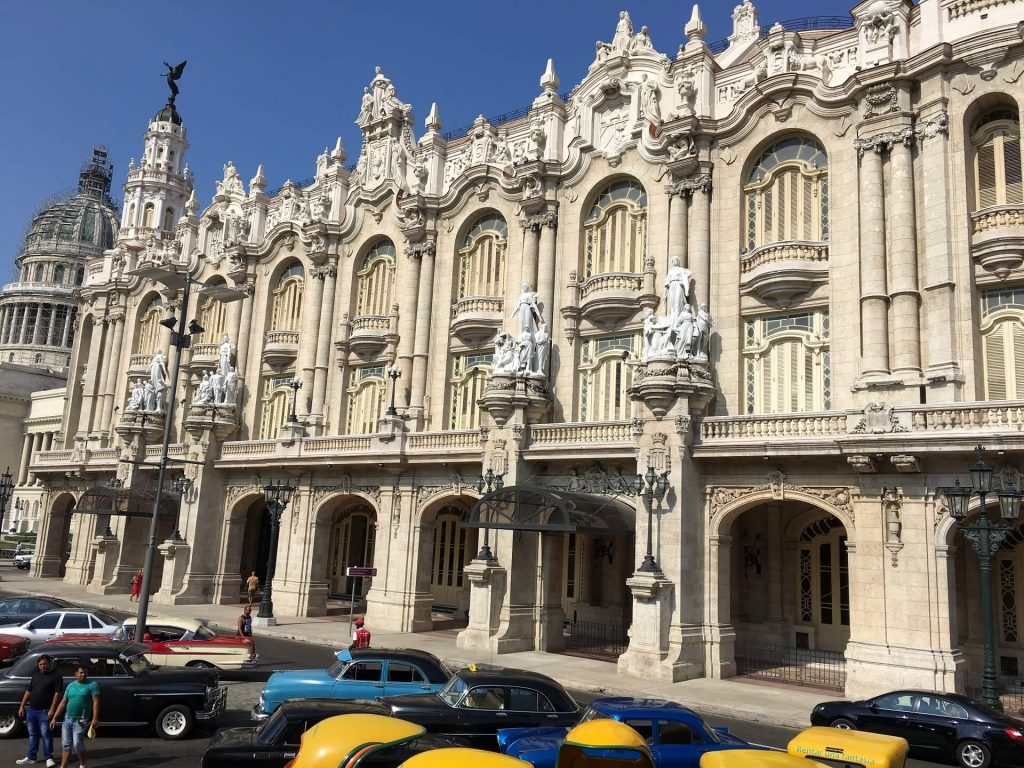
It is now less difficult for U.S. citizens to visit Cuba under one of the categories specified by the U.S. State Department. The most popular category for U.S. citizens is “Support for the Cuban People.”
U.S. carriers like American Airlines have direct flights from the U.S. at more competitive prices. With the easing of restrictions, additional airlines have begun flights.
There’s really no best time to visit Cuba. There are better times to visit like the cooler and dryer months from December to May.
Some would argue January and February are the best months to visit Cuba because of the milder weather. The warmer months from June to November can get pretty hot and humid but prices can be a bit lower as well.
But don’t assume Cuba is like any other Caribbean country. Getting there is now easier than in the past, but navigating the idiosyncrasies and peculiarities of this beautiful country can be challenging if you don’t know your way around.
Check out what its like to visit Cuba on a small group tour suitable for U.S. citizens.
Note: The U.S. government publishes a list of Cuban establishments that U.S. citizens are prohibited from patronizing.
Here are some recommendations on dos and don’ts for your trip to Cuba.
Table of Contents
ToggleDO’S FOR YOUR NEXT TRIP TO CUBA
Do dress down.
Wondering what to bring to Cuba? You won’t stand out in casual clothes on your trip to Cuba, and you’ll never have to worry about what to wear in Cuba.
From the capital city of Havana in the west to Santiago, in the east and the quaint towns in central Cuba like Cienfuegos, Trinidad and Santa Clara, Cuba is an extremely casual country.
When you visit Cuba, wear comfortable shoes because Havana is the ultimate walking city. Leave your jewelry at home. Bring sunglasses, a wide-brim hat and sunscreen. It is very hot and sunny.
When planning what to pack for Cuba in the summer months, you may want to bring rain gear like an umbrella and light poncho. Summer showers are brief but can be intense.
Remember most personal products like, sun screen, feminine hygiene, deodorant, etc. are not readily available in Cuba. Bring your own when considering what to pack for Cuba.
Do engage with the local population.
Cubans are among the friendliest and warmest people. They will ask you questions about yourself and share information about themselves freely. As with any other country, don’t discuss the obvious “no-nos;” politics and religion.
Sure there are hustlers or “jineteros” like everywhere else; people may try to sell you cigars (guaranteed to be counterfeit) or offer other services. A simple “no gracias” will suffice to discourage them.
Cuba is very safe but it is still prudent to exercise caution as on any visit to a different country. But don’t miss out on the opportunity to have genuine interactions with some very nice and gracious people.
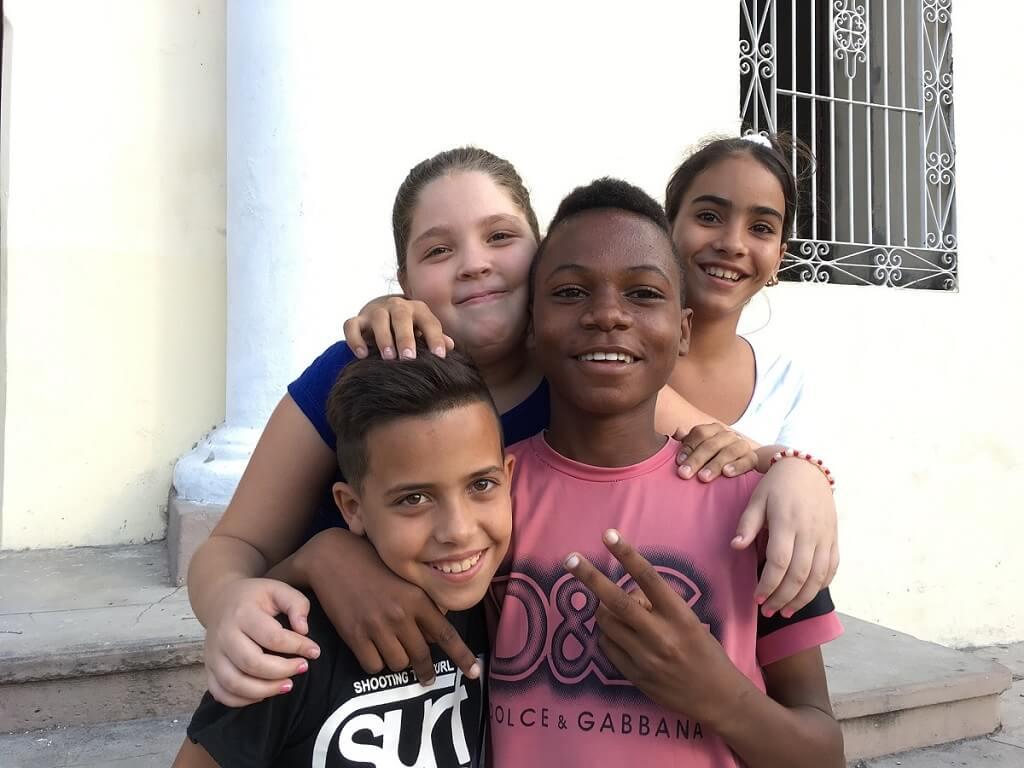
Do bring enough cash.
If you are a U.S. citizen, you need to bring enough cash to last the entire trip to Cuba. Credit cards from U.S. banks are not accepted in Cuba.
ATMs in Cuba will not deliver funds drawn on U.S. banks. U.S. citizens cannot buy Cuban currency in advance as it is not traded internationally. You need to buy it upon arrival in Cuba.
The Cuban government formally ended its dual currency system on January 1, 2021. The CUC, the former currency, was phased out completely on June 2021 leaving the island with only one currency for the first time in over 20 years, the “moneda nacional” or Cuban peso.
When you arrive at the airport in Havana, exchange your money at the “CADECA,” the official government exchange booth. This is located to the right as you exit the airport.
You can’t miss it as there are signs leading to it. The cost of the taxi to the Havana city center is about the equivalent of 25 to 30 U.S. dollars.
Don’t exchange too much money at first because if you have left over pesos you may not be able to exchange them back to your home currency. There are plenty of places to exchange funds in the city, so exchange only as you need to.
Make sure to have small change for tips or to purchase bottled water or some local transportation.
Always count your change and understand the exchange rate.

Do stay at a “casa particular” (privately owned guesthouse)
For the past several years, the government has allowed private citizens to engage in certain private-sector pursuits including renting out rooms in their homes to visitors. These are called “casas particulares” or private homes, “casas” for short.
“Casas” are similar to Airbnb, homestays or your typical Bed and Breakfast establishments. In other words, a Cuban Guesthouse.
The advantage to the traveler is that they get to interact with a typical Cuban family. Also, the cost of staying at one of these casas is small compared to a standard hotel.
The price can range anywhere from U.S.$15.00 to $100 and up per night depending on the city, the type of accommodation and other amenities.
Note: A casa must be listed with the local government and you must submit your passport details upon arrival for registering with local authorities.
Here is the current state of the Cuban casa particular experience and tips on how to book your own.
How to book your casa
1. Connect with one of the booking services that broker private casas. One that I have used in the past is Homestay.
I use this Homestay site to reserve accommodations in Havana and across the island.
Choose the city you want to stay in from the selections that display pictures, price per day, house rules and a message from the hostess -usually women.
In some casas, you just reserve your room and pay at check-out. In others, you pay a portion of the total cost to the booking service and the difference at check-out. These requirements are simple and clearly stated on the website.
2. Communicate with your hostess either directly or through the booking service. Here is where you get directions to the casa.
Most casas offer breakfast. The cost of breakfast is around $5.00USD per person. The food is exceptional and abundant; fresh fruit, eggs, bread, butter, fruit spread, coffee, milk, all kinds of tropical juices and sometimes, ham.
This might be the best meal you will have all day so definitely sign up for it. The hostess will also happily prepare lunch or dinner if you want. These meals are also invariably good, authentic and reasonably priced.
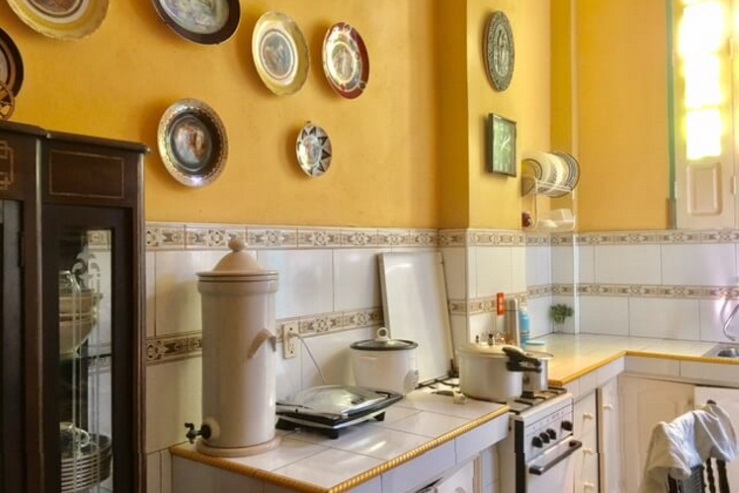
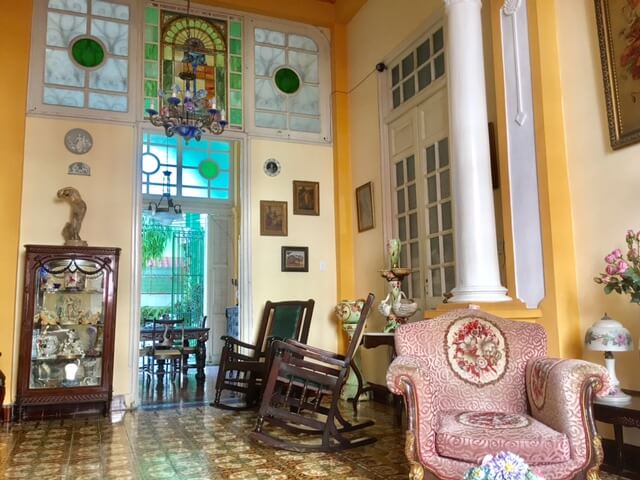
Another amenity the casa may provide is taxi service from the airport or bus station to the casa. It is also recommended you accept this service as it’s just more convenient for you to have someone pick you up and bring you to the casa.
Make sure you confirm beforehand how much the fare is likely to be. For example, taxi fare from Havana airport to the city is around $25-30.00USD. You can verify taxi fares on TripAdvisor for just about any city.
Your hostess will consider it part of the service to “show you the ropes.”
She can book a casa for you in the next town, direct you to the best local restaurant or bar, reserve a taxi, make a restaurant reservation, explain the communal taxi system and generally function as a friendly concierge.
Yes, she may make a small commission if you accept a recommendation but we’re talking pennies and you’re paying for a service.
Also, the suggestions are invariably good because they take their hostess responsibilities seriously. You’re sleeping in their home and they don’t want you going home saying, “Oh my god! That was appalling!”
They want you happy, contented and recommending their place to your friends.
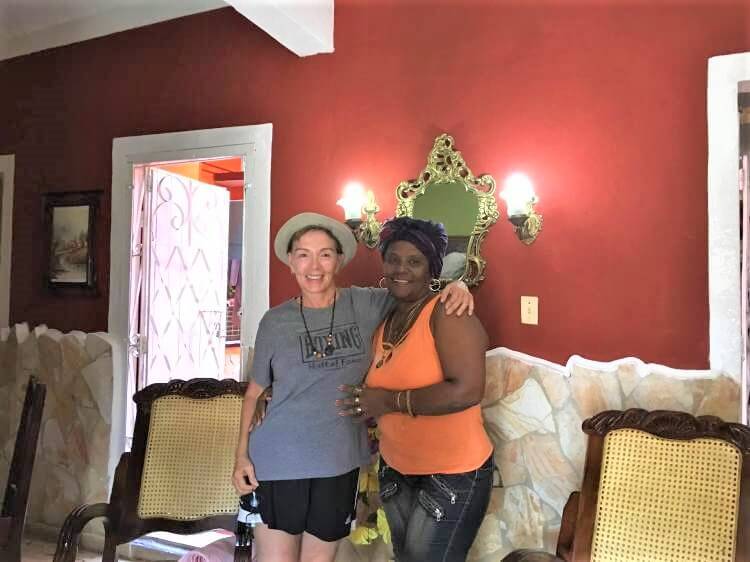
Another way to secure a casa, especially when you are in the interior of the country, is to just show up at the bus station.
There are people there advertising casas to the arriving travelers. You can see as many casas as you want before committing to one.
The best part of staying at a casa is that you get to interact with the local people. It’s as authentic an experience of cultural immersion as you can have in a foreign country.
You are there in the casa while they cook authentic Cuban food and generally chill in their genuine Cuban living rooms or patios.
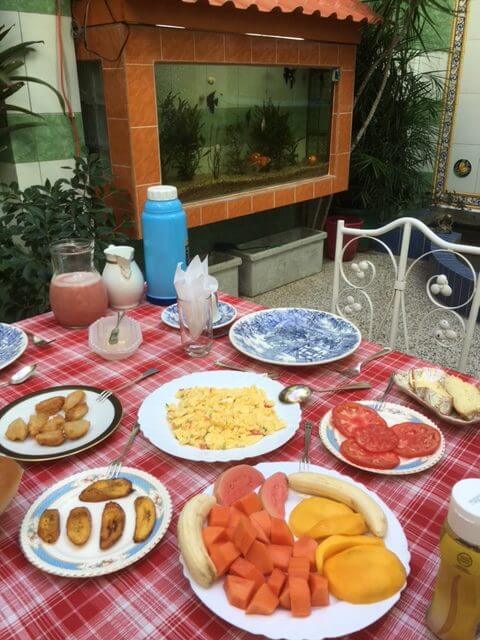
Whenever I’ve stayed at one of these casas the hostess seemed genuinely happy I was there. They always went out of their way to explain things and make suggestions.
Many travelers prefer to have at least their first one or two nights pre-booked from their country of origin. However, in Cuba just about every other home is a “casa.” Casas in Cuba are as common as tapas bars in Spain.
Just look for the “casa” sign, the blue-on-white upside-down anchor, national symbol for a homestay accommodation. Knock on the door and ask if they have accommodation for the night.
If they don’t, they’ll know someone who does. Ask to see the place before committing to see if you like it and make sure you understand the agreed price. That’s all there is to it.
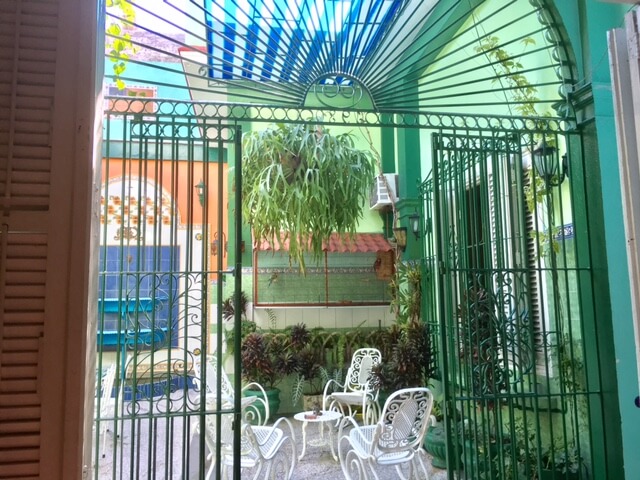
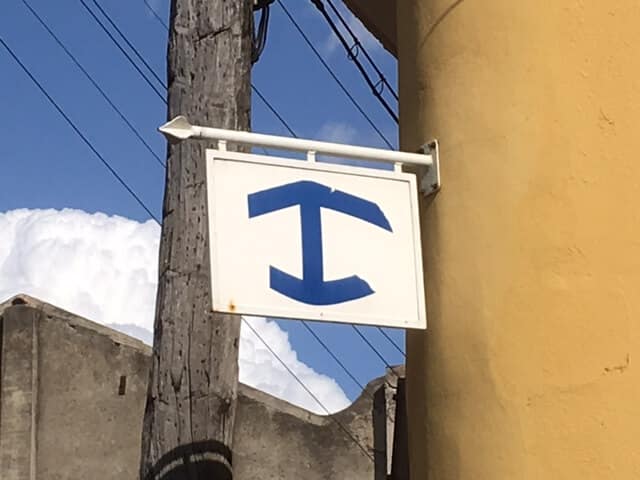
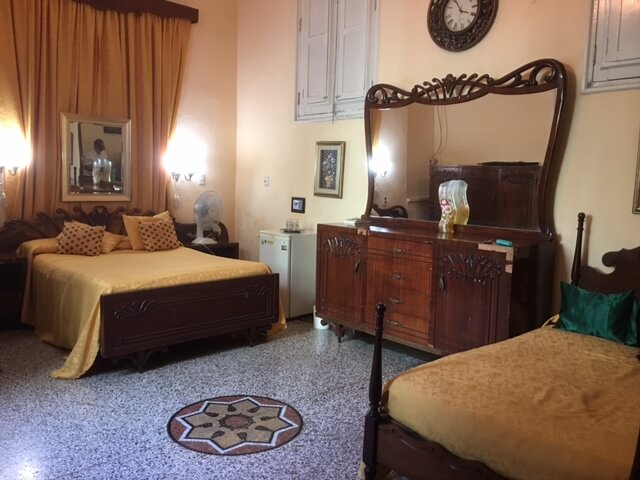
Casas come in all shapes and sizes. Most casas are single rooms in someone’s house.
They can also be a luxury apartment in a Havana high-rise or a mansion with a pool in an upscale neighborhood depending on your budget and what’s available.
The one thing they all have in common, however, is that the inside is much more beautiful than the outside.
Cuba’s architecture and infrastructure can be rundown in some areas. But the inside of the private home is well kept, accommodating and frequently decorated with a style, elegance and grace that belies the exterior.
Most casa accommodations come with a refrigerator stocked with beer and water for a reasonable charge.
Do patronize paladares.
As the casas particulares have revolutionized the hotel scene in Havana, so have the “paladares” or private restaurants transformed the food culture. Today Cuban restaurant culture is experiencing a renaissance.
At an average price of $30-$40USD for a seriously good meal in a cool location, paladares now flourish in every city but especially in Havana. Demand is outstripping supply, however.
To dine in some of the best paladares you need to reserve weeks or even months ahead of time.
One trick is to request a reservation at some odd time like 2 pm, and later just have snacks and drinks for dinner at one of the music hot-spots in any of the colonial plazas.
The best menu selections include chicken, pork and fresh seafood as the star attractions. Lobster is also on the menu but it is being overfished so I advocate against ordering it.
Beef, particularly steak, does not seem to be a good choice probably due to the cost of meat and its relative lack of availability.
The paladares venues vary. Some I enjoyed include a SoHo-chic renovated cooking oil factory attached to an art gallery “El Cocinero.”
Another is San Cristobal, a converted early 20th-century mansion where former U.S. President Obama dined.
Honorable mentions go to Dona Eutimia in a little alley off Plaza de la Cathedral and Paladar de Mercaderes on Mercaderes Street, one of the major thoroughfares. But there are so many more!
Although it’s fun to explore and take a chance on a good paladar, you are better off sticking to a recommended one or you might end up in a tourist trap. Your casa hostess can recommend a good restaurant to you.
There is undeniably some truth in the saying “see it now before it changes forever”.
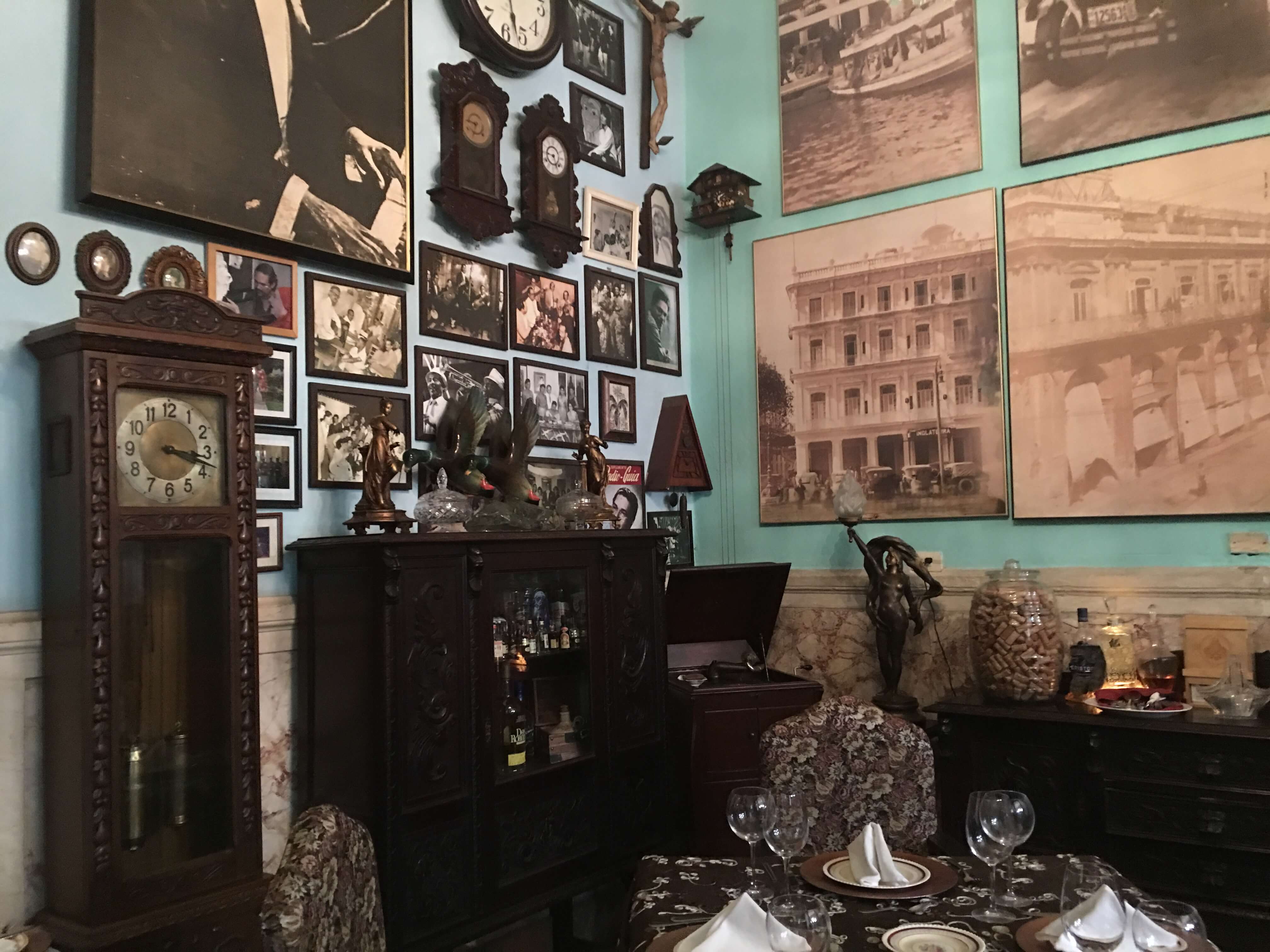
Do use the internet (but don’t expect too much)
Using Cuba Wi-Fi is, admittedly, a big pain in the neck compared to what one is accustomed to.
It can be inconvenient and time-consuming. Here are a few ways to minimize the hassle while accessing Cuba Wi-Fi.
Begin weaning yourself off of the internet before you arrive in Cuba. Download and store key files to your device so you can access them offline when and if needed.
Taking screenshots of documents will store them in your photos. Key files can include your itinerary, passport, pictures, recommendations from various websites, reservations, maps and your boarding pass.
If you loose these documents, you want to be able to show proof of them if and when asked.
One map app I use that is accessible offline is Maps.me. Here you can learn more about Map.me.
Ease yourself into the realization that the internet will not be as readily accessible as it is at home. Explain to your family and friends that they may not be hearing from you as frequently as they’d expect so they don’t worry.
There are two things required to get online in Cuba: a prepaid internet Cuba Wi-Fi card and a hot spot.
The card comes in one-hour and five-hour denominations and is available at any ETECSA location and high-end hotels. That’s why some people refer to it as an ETECSA card.

ETECSA is the government-owned entity that runs all telecommunications in Cuba including internet service and Wi-Fi. ETECSA offices are located all over Cuba especially in the bigger cities. They are easy to find, just ask anyone and look for a place with long lines outside the door.
You will have to wait on line to buy your ETECSA card, but it will be cheaper than in most hotels, about $1.00 USD for a one- hour denomination card. Five-hour denomination cards are also available.
To purchase an internet card one must present a passport so whatever you log on to on the internet can be linked back to you. Keep your card safe to ensure it is not stolen.
Avoid the lines at ETECSA by figuring out how much internet time you will need and buying several cards at the same time. This way you won’t have to go through this process more than once or twice.
If you have leftover cards or time, give them to friends you have made during your visit or your “casa” hostess. It will be appreciated.
Now you must find a hot spot to launch your Cuba Wi-Fi adventure. Luckily, they are not so difficult to find. Look for the WIFI symbol.
The best way to find a hot spot location is to notice the areas where you see groups of Cubans congregating staring into cell phones and laptops
Most ETECSA offices and the surrounding area are hot spots. Other locations include higher-end hotel lobbies, parks, and entire sections of the city.
There are pros and cons regarding where you buy and use the card. The advantage of buying your ETECSA card at a luxury hotel is that you can sit in the airconditioned lobby, use your card and maybe have a cool drink.
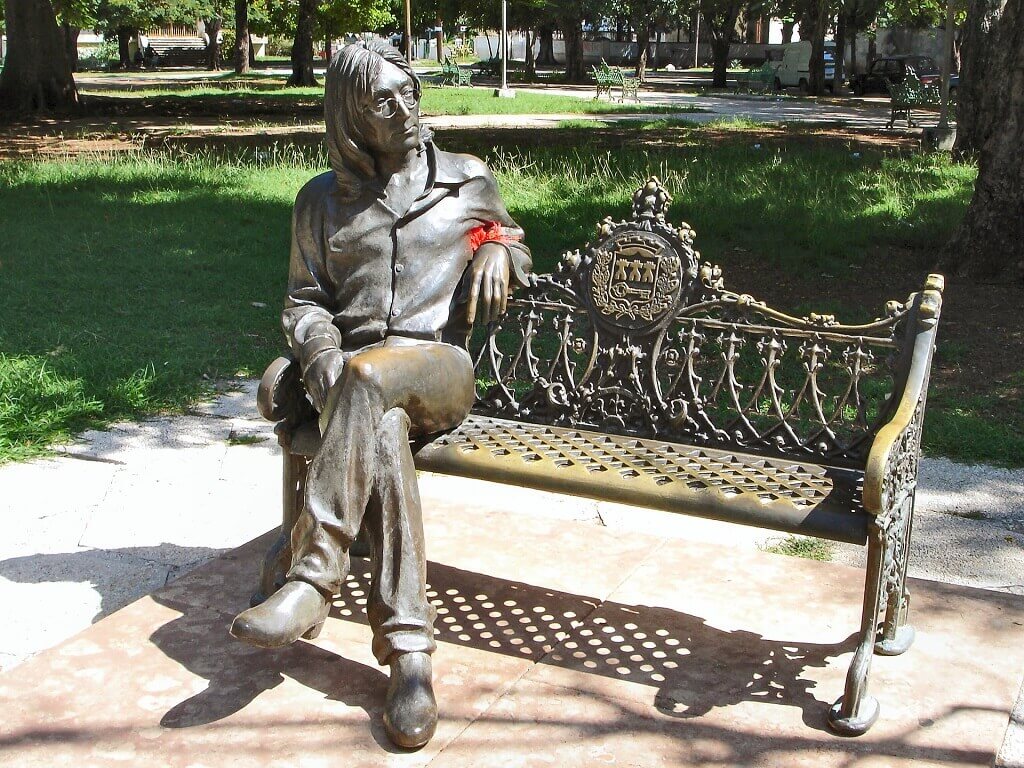
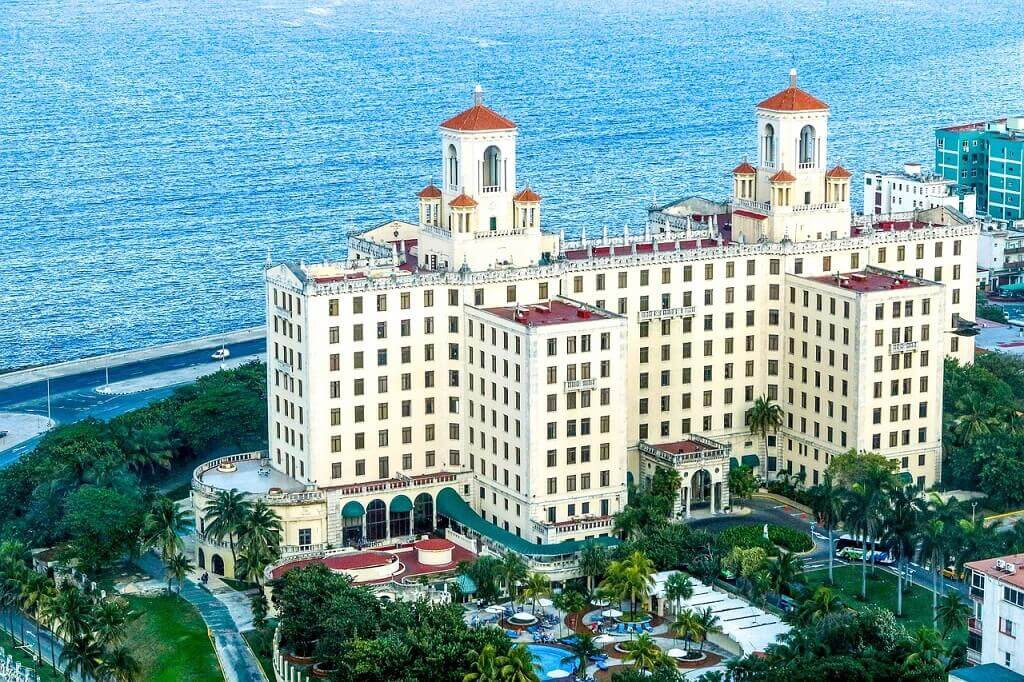
Use your ETECSA card at either a public park or a high-end hotel or some casas
The internet tends to be more reliable at these high-end hotels. Finally, you don’t have to wait on long lines, you just buy your card at the reception.
The disadvantage of buying your card at the hotel is that it will cost you more; from $5 to $7USD vs $1 at ETECSA.
Many of these hotels will require that you buy something, like a drink at the bar, before they agree to sell you a card.
This is fine. You just sit at the bar having a daiquiri or a mojito while you chew up your internet time and chat up the locals.
The other option for Cuba Wi-Fi hot spots is using Wi-Fi found in public parks in the bigger cities. Any local will point them out to you.
In Havana these spots are in the most popular and trafficked areas like Havana Vieja, the busy streets of La Rampa and San Rafael and the Malecon (Havana sea wall).
As of the summer of 2017, some casas particulares have been granted permission to have Wi-Fi. The assumption is that Cuba Wi-Fi availability will continue to grow.
Here is a list of places where you can access the internet on the island. The number of hot spot locations is constantly growing but this should get you started.
Once you have your card and you’ve found your ideal location, its time to log on.
The ETECSA cards are the size of regular credit cards and have scratch-off areas for the username (usuario) and password (clave). To log on follow these steps:
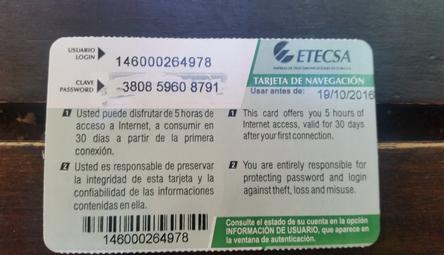
Scratch off the areas revealing username and password, open the Wi-Fi settings on your device and connect to the ETECSA network, launch your web browser, when the login screen appears, enter your username and password.
Once you’re connected, you’ll see a screen telling you how much time or credit you have left on your card.
I try to use up my entire hour at one time rather than use half an hour, then log in again later to use up the other half. I’ve had trouble logging off then back on again with the same card. That’s why I prefer to buy single hour cards.
If you decide to log off before using up the time on the card, make sure to close your session so you don’t continue to get charged. Insert 1.1.1.1. into the address bar.
A screen will pop up telling you how much time you have left, and you will see the words “cerrar sesion” (close session). Click on that to log out and close your browser.
These tips and recommendations should make your Cuba Wi-Fi experience a little less onerous and time-consuming leaving you more time to enjoy what this beautiful country has to offer.
Do sample Cuban goods.
The best products to buy in Cuba are tobacco, the superb rum, honey (yes, honey) and original art. The coffee is also a good buy at $20USD for, like, a ton of seriously good coffee.
Note: In September 2020 the Trump administration prohibited U.S. citizens from importing tobacco and rum from Cuba for personal use, but it can be consumed in-country.
It is expected the new U.S. administration will reverse that order, but it remains as of this update.
Check before you go to learn if and how much you can bring back into the U.S.
Do learn a little Spanish before you go
Most tourism industry personnel will speak some English and other languages as well. Your casa hostess will also speak a bit. Outside those circles, it is wise to learn a few Spanish phrases like “how much” and so forth.
There are several translation apps on the market.
Do get travel insurance
Travel insurance is a good idea on any trip but especially for those involving international flights. You want to make sure you and your possessions are protected against loss flight cancellations and other unforeseeable.
There are many insurance companies that will insure your trip for a reasonable price. I use this site, travelinsurance.com because it allows me to compare various companies and policies simultaneously.
Do learn how to get around
Havana and Cuba in general has many transportation options from private convertible taxi – the most expensive – to public transportation.
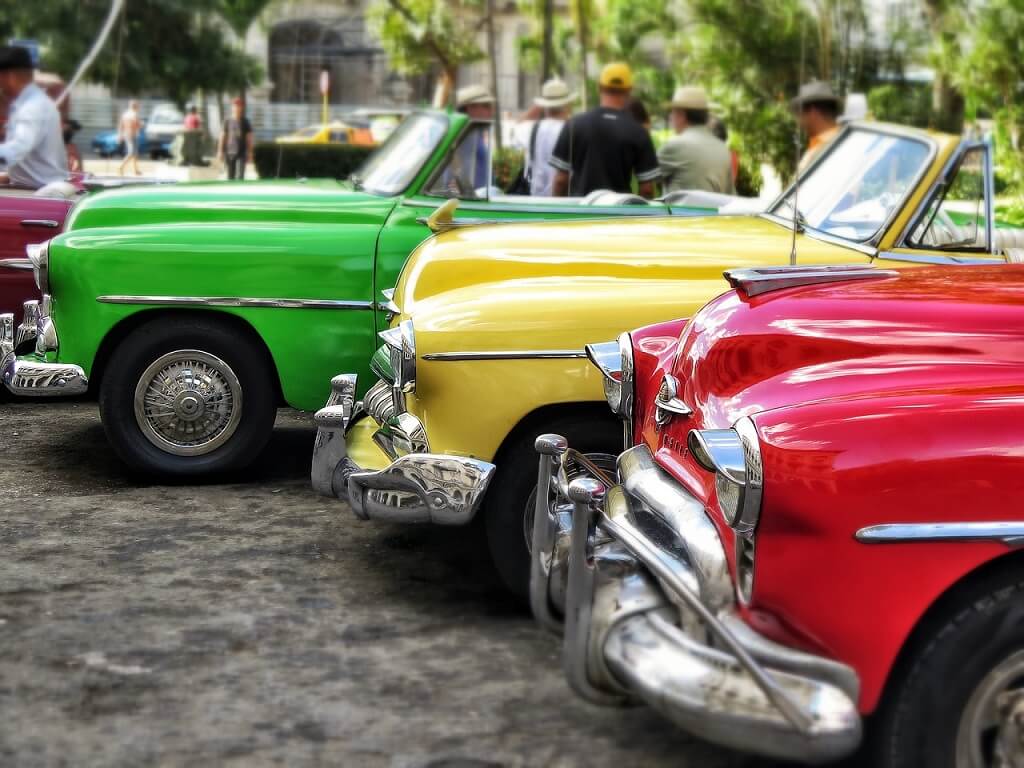
Learning how to navigate the Cuban transportation systems is one of the best ways to save money. Make an effort to familiarize yourself.
Do Walk
The best way to get to know any city is by walking. Havana is the ultimate walkable city, especially Old Havana. Here is the perfect Old Havana walk, with map, that will make sure you hit the highlights on foot.
Watch where you walk as some colonial streets can be uneven.
Do keep your airplane mode on.
You can use WhatsApp to text and call with airplane mode on. Keeping your phone on airplane mode ensures you will not incur roaming charges.
Do bring donations
Many visitors to Cuba bring donations to distribute. These can be school supplies like pens, pencils, crayons, notebooks. Other desired items include gently used clothing, plastic containers, batteries, reading glasses.
These can be left with schools, churches, assisted living facilities or with you casa hostess.
Do immerse yourself in the amazing culture.
Cuba, and Havana in particular has amazing museums, history, art, and architecture. This will blow you away. Prepare to be amazed on your trip to Cuba.
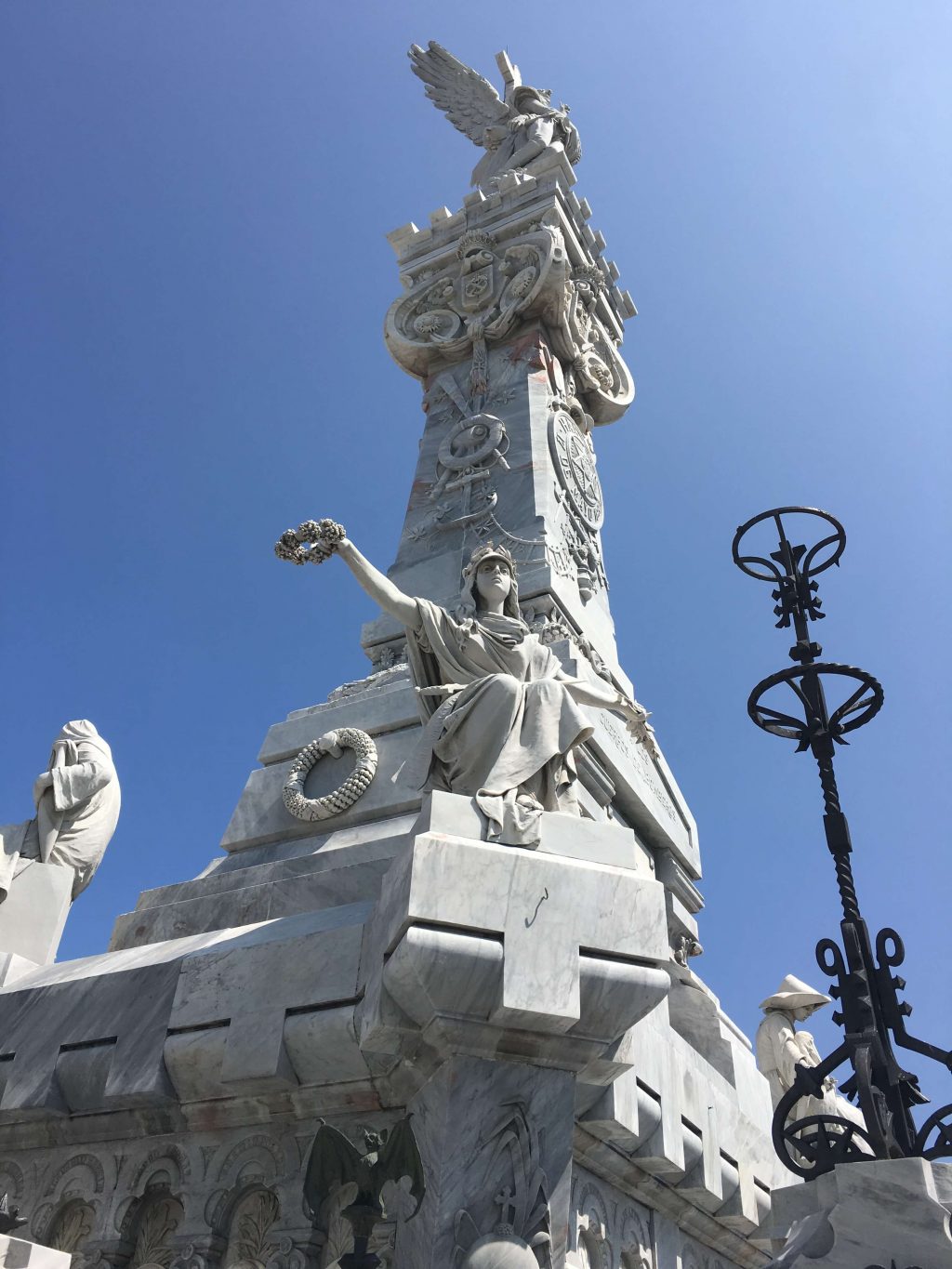
Do be patient
Things don’t always work the way you expect on your trip to Cuba. Customer service is poor. Wi-Fi and connectivity can be unreliable.
Government offices sometimes open and close on haphazard schedules or don’t open at all. Important venues are frequently “closed for repairs” for years.
Your patience will be rewarded by meeting lovely people, seeing amazing colonial architecture and nature, and experiencing the fascinating Cuban culture.
Don’ts for your next trip to Cuba
Don’t take pictures of the military or police.
This is a serious “don’t” and illegal in Cuba. Not that you would want to anyway, but there you have it.
Don’t patronize luxury hotels.
Many “luxury” hotels frequently feature bland food, indifferent service and can be far from the sights. Many of these are rated 4 and 5 stars. These ratings do not adhere to any internationally recognized rating system.
A typical 5-star government hotel in Havana is the equivalent of a 2 or 3-star hotel in any other Caribbean nation. The prices, however, are very much in keeping with a standard 5-star hotel. This results in an exceeding poor value for your money.
Don’t drink the tap water
Have bottled water with you. Cuba is hot and you will want to be hydrated. You can buy bottled water for one or two USD. Or, have your casa hostess boil water for you and carry it in a water bottle.
Most good paladares and casas will have filtered water for their guests and patrons.
Don’t buy cigars from street vendors
You definitely want to support local businesses and budding entrepreneurs. However, scammers may approach you to sell you cigars that are guaranteed to be counterfeit. A simple “no, gracias” is enough to make them go away.
Don’t eat in government-owned restaurants
Most of the restaurants in Cuba are government run and provide cheap food. The quality and environment in general is not as good as in paladares. Stick to the paladares where you can eat better and support local entrepreneurs.
Don’t flash jewelry, cash or electronics
Cuba is a very safe country especially for visitors. The government derives a huge portion of its revenue from tourism.
They want to make sure visitors are safe. You will see police and not-so-subtle-undercover security prominently positioned in tourist areas. Visitors will feel safe in Cuba.
Still, one needs to exercise caution as one would in any country developed or modern.
Don’t rent a car
Renting a car in Cuba is expensive. The roads are not well marked and some are in disrepair. Gas is expensive and not available everywhere.
Should the car break down, you are not guaranteed to have readily accessible repair options. Renting a car in Cuba is a really bad idea. Stick to the local transportation options mentioned in this post.
Don’t forget your consumer products and meds
There are no supermarkets and drug stores as you know them in Cuba.
Basic consumer products like aspirin, feminine hygiene, insect repellent, sunscreen, antiseptic towels, handwipes, anti-diarrhea meds and similar products are very difficult to obtain or non-existent. If you use it, bring it with you.
Honorable “Do” Mentions
Order the terrific beer. The local brands of Cristal and Bucanero are the best and only $2-2.50USD. Avoid the wine.
If you’re planning to visit the outstanding music venues, get a good night’s sleep the day before as the clubs open and close late.
Visit the extensive Colon Cemetery, one of the world’s most impressive.
Negotiate taxi fees before you take off. When taking a bicycle-taxi, or any other form of Cuban transportation, make sure to negotiate the fee beforehand.
Order seafood; fresh, delicious and reasonably priced.
DANCE! Never mind. You won’t be able to resist anyway.
You will never run out of things to do in Cuba!
Make sure to listen to our podcast interview on Cuba to learn insider tips and cultural insights of Cuba and check out the guides and reference books below.
What other dos and don’ts in Cuba do you think are important to know about?
And don’t forget my new book, “Don’t Just Travel to Cuba, Experience Cuba. The Ultimate Cuba Guide Book,” Available on Amazon.
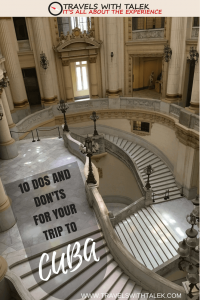
Updated January 2024.

BTW, if you are getting ready for your trip, make sure to take advantage of these useful, money-saving links to book your trip:
- Research and book your flight with Skyscanner. I have found them to be the best because they list all airlines including the budget ones. You are always sure of having researched all options.
- For car rental around the world, Discover Cars has flexible pickup and drop-off options, I recommend Discover Cars.
- Book your accommodation with Booking.com. I find they have a wide selection and a nice, user-friendly, transparent website.
- Protect your trip and, more importantly, protect yourself with travel insurance. I use Travelinsurance.com and have been very happy with them.
- For more general tours to any destination or attraction, book with Viator. Check them out.
- Need a visa? Get your visa for all countries with Passport Visa Express.
- Looking for a cool walking tour to explore a city? My favorite walking tours are offered by Take Walks.
- Food and drink tours are the best way to enjoy a city. And Devour Tours are my favorite.
- Looking for a good VPN to protect your security, privacy and freedom online while traveling? Nordvpn is your best option.
- The best and most economical way to stay connected while traveling is with an Airalo eSIM.
I personally use, and can recommend, all the companies listed here and elsewhere on my blog. By booking through these sites, the small commission we earn – at no cost to you – helps us maintain this site so we can continue to offer our readers valuable travel tips and advice.




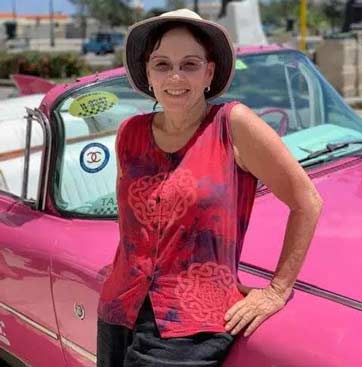







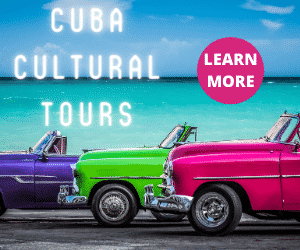

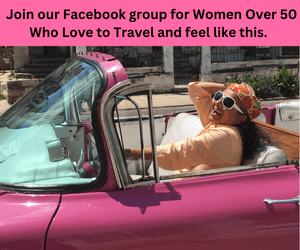
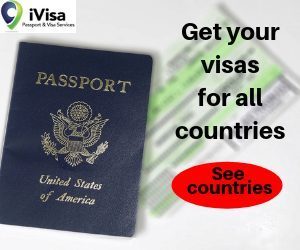



13 Responses
Hi there! Great post on Cuba! You get very good around the different parts of what’s it’s like to visit, and how one should act. I totally agree with all of it.
Hi, Rebecca. Thank you for the comment. Glad you enjoyed the post.
Bring your own spices to Cuba. I found that pepper is rare, as are any hot spices. I brought some from New Orleans as gifts to my house mothers at the Casas, and they could not eat them! Just too hot as they’re not used to spices. I’m glad I brought salt, pepper, and hot sauce seasonings – a friend who had been to Cuba advised me to do so and I’m glad she did!
Yes, spices are in short supply. Cuban food is savory but not spicy. I can imagine NOLA spices would be too hot. Hope you liked Cuba!
Love this post. We visited Cuba in 2017 and it sounds like your experience was very similar to ours. Thank you 🙂
Thanks for commenting. It is an amazing place!
I worked for a Canadian tour operator and was the manager for Cuba. Cubans appreciate any type of consumer goods often unavailable in Cuba . New or used, they love the gesture. Small gifts to maids, casa host, or driver will get you great service. Check your closet and junk drawer. I brought consume jewelry I didn’t want anymore, small perfume samples, summer clothes & shoes I wore on the trip and gave away. Anything lightweight, like pkg of ramen noodles or bag of candies will be shared by the family.
Yes, this is exactly correct. Those little gifts and gestures are so appreciated! Thank you for reading and commenting!
Hey I am really looking forward to traveling to Cuba with my girlfriend. But both are really into our cigars. Which is 1 of the biggest reason why we are going. Can we bring back Cuban cigars? And if so is there a limit? Also where should I go to buy them in Havana Cuban? I heard about all the counterfeit ones being sold to tourists.
Hey, Steven! You’ll love Cuba. Unfortunately now is not a good time between the covid and the protests. Trump instituted a series of restrictions on U.S. citizens before he left office. Among those are that no Cuban cigars or rum are allowed to be brought back into the U.S. This may change with the new Biden administration but, as of this writing it has not. I suspect this restriction will be lifted but I don’t know when.
When you are allowed to buy cigars in Cuba and bring them into the U.S., do not buy them form anyone offering them to you on the street at very cheap prices. These are, without a doubt, counterfeit. The bet places to buy cigars is the cigar factories and stores like Partagas (any hotel concierge or your “casa particular” hostess will point you to the Partagas factory). You can also buy them at even better prices at the tobacco plantations in Vinales. Take a tour of Vinales. It is one of the coolest things to do in Cuba. Again, a hotel concierge or your casa hostess will recommend a tour. Get a couple of tour quotes before settling on one. I hope this is helpful. Let me know if you need any other information and subscribe to my blog for the latest Cuba info and cultural tours to Cuba.
This is a very good information . Love the post. Very helpful specially the small gifts to bring. Looking forward to visit Cuba.
Thank you for commenting. Yes, Cuba is a fascinating place. We do tours there. Subscribe to our newsletter to be alerted of the next tour to Cuba.